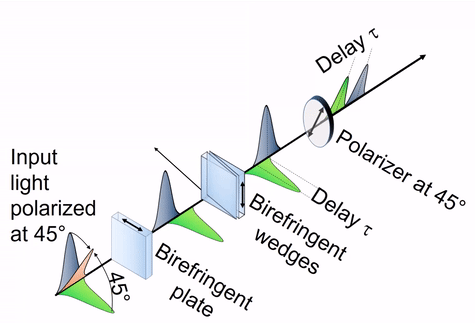Our technology is based on Fourier-transform (FT) spectroscopy, a technique that uses interference of light rather than dispersion to measure spectra. Light is split in two collinear time-delayed replicas, whose interference pattern is measured by a detector as a function of their delay. The FT of the resulting interferogram yields the continuous-intensity spectrum of the waveform. FT spectrometers have prominent advantages over dispersive ones:
(i) higher signal-to-noise ratio in a readout-noise-dominated regime (multiplex or Fellgett’s advantage);
(ii) higher throughput and increased system étendue, due to the absence of slits (Jacquinot’s advantage);
(iii) higher wavelength accuracy (Connes’ advantage).
Moreover, FT spectrometers provides a flexible spectral resolution, which is adjusted at will by varying the maximum scan delay and does not affect the throughput of the device.
Our techonology retains all the aforementioned advantages of Fourier-transform spectrometers, namely: Fellgett’s, Jacquinot’s and Connes’ advantages.
Furthermore, our interferometer is ultra-stable and completely insensitive to external vibrations. These features are made possible thanks to the novel employed technology. Unlike a Michelson or a Mach–Zehnder interferometers, our device does not separate the two replicas in space (which would cause mechanical instabilities) but in polarization. To this purpose, it makes use of birefringence. In this class of materials, vertically and horizontally polarized light experience a different index of refraction, and thus it propagates with different speed. As it can be seen in this animation, it is possible to vary the delay between the two replicas by changing the insertion of a birefringent wedge, thus continuously varying the material thickness.

Our patented passive common-path interferometer inherently features an extremely high delay stability and reproducibility (better than 1 attosecond, i.e. approx. a thousandth of the wavelength). For this reason, it can be used without any active control or position tracking even in harsh environments such as industries in the presence of vibrations.